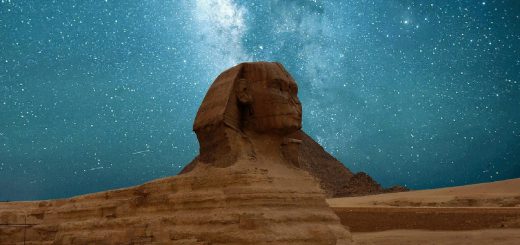Ancient Egyptian Civilization: Secrets and Culture

Before diving in, please note: This post is for informational purposes only. If you’d like to know more about how we approach topics, feel free to check out our friendly Disclaimer Page.
Hey there, amazing readers! 🖐️ Just a quick note: yes, we know there are a lot of ads here. Trust us, we get it—it’s not the prettiest look, but they help us keep this blog alive and kicking. Those pesky little ads cover the costs of all the behind-the-scenes magic, from hosting and tech stuff to creating content we hope you’ll love.
We’re committed to delivering quality posts, and your support (even just sticking around despite the ads) means everything to us. So, bear with us, and thanks for helping us keep the good vibes rolling. Now, on to the fun stuff! 😉
TRANSLATE BUTTON AT THE END OF THE ARTICLE
Introduction to Ancient Egyptian Civilization
Ancient Egypt is one of the most fascinating civilizations in human history, known for its rich culture, advanced technology, and mysterious practices.
The civilization emerged around 3100 BC when the first Pharaoh, Narmer, united Upper and Lower Egypt.
Over the centuries, Ancient Egypt flourished, leaving behind a lasting legacy that still captivates the world today.
From the majestic pyramids to intricate hieroglyphics, Ancient Egypt has left an indelible mark on the world.
The civilization was characterized by its complex social structure, intricate religious beliefs, and stunning art and architecture.
The Nile River, which served as the lifeblood of the civilization, played a crucial role in shaping the culture and economy of Ancient Egypt.
The Rise and Fall of Ancient Egypt
The rise of Ancient Egypt can be attributed to its strategic location along the Nile River, which provided fertile land for agriculture and transportation.
The early Egyptians developed a sophisticated system of government, led by the Pharaoh, who was believed to be a god on earth.
The construction of the pyramids and other monumental structures showcased the wealth and power of the Pharaohs.
However, despite its grandeur, Ancient Egypt eventually faced a decline.
The invasion of foreign powers, internal strife, and natural disasters all contributed to the fall of the civilization.
The last Pharaoh of Ancient Egypt, Cleopatra VII, famously aligned herself with the Roman Empire before Egypt was annexed as a province in 30 BC.
The Pyramids: Engineering Marvels
The Pyramids of Giza are perhaps the most iconic symbols of Ancient Egypt.
These massive structures were built as tombs for the Pharaohs and their families, intended to safeguard their bodies and possessions for eternity.
The construction of the pyramids is a testament to the engineering prowess of the ancient Egyptians, who used complex techniques to move and position the massive stone blocks.
The Great Pyramid of Giza, built for Pharaoh Khufu, is the largest and most famous of the pyramids.
It stands at over 450 feet tall and was constructed using millions of limestone blocks.
The precision with which the pyramids were built, aligning perfectly with the cardinal points of the compass, continues to baffle historians and engineers to this day.
The pyramids were constructed using a workforce of thousands of laborers, including skilled craftsmen, engineers, and laborers.
The construction process involved quarrying and transporting massive stone blocks, as well as precise positioning and stacking of the stones.
The internal chambers of the pyramids held treasures, artifacts, and mummies of the Pharaohs and their families.
The pyramids were surrounded by smaller pyramids, temples, and tombs for the nobles and officials of Ancient Egypt.
The construction of the pyramids was a massive undertaking that required careful planning, organization, and coordination among the workers and overseers.
Hieroglyphics: Language of the Gods
Hieroglyphics were the ancient Egyptian writing system, consisting of elaborate characters and symbols that represented sounds, words, and phrases.
The word "hieroglyphics" comes from the Greek words "hieros," meaning sacred, and "glypho," meaning carving.
The hieroglyphic script was used for religious texts, monumental inscriptions, and official documents throughout Ancient Egypt.
The hieroglyphic script was a combination of logographic and alphabetic elements, with over 1,000 distinct characters representing words, sounds, and concepts.
The language was written from right to left, top to bottom, with certain characters functioning as determinatives to clarify the meaning of words.
The Rosetta Stone, discovered in 1799, was instrumental in deciphering the hieroglyphic script.
Hieroglyphics were used in monumental inscriptions, temple walls, tombs, and royal decrees.
The hieroglyphic script was reserved for formal and religious texts, while hieratic and demotic scripts were used for everyday writing.
Hieroglyphics were considered a sacred and mystical form of communication, reflecting the spiritual beliefs of the ancient Egyptians.
The decipherment of hieroglyphics opened up a wealth of knowledge about Ancient Egypt’s history, culture, and beliefs.
Ancient Egyptian Religion and Beliefs
Religion played a central role in the lives of the ancient Egyptians, shaping their beliefs, rituals, and daily practices.
The ancient Egyptians worshipped a pantheon of gods and goddesses, each representing different aspects of nature, the cosmos, and human life.
The Pharaoh was believed to be a divine ruler, acting as the intermediary between the gods and the people.
The ancient Egyptians practiced elaborate rituals and ceremonies to honor the gods and ensure their favor.
Temples were erected throughout Egypt to house the statues and images of the gods, where priests and priestesses performed rituals, offerings, and prayers.
The afterlife held a significant place in Egyptian religion, with the belief that the soul would journey to the underworld and undergo judgment before reaching the eternal paradise.
The most important gods of the ancient Egyptian pantheon included Ra, Osiris, Isis, Horus, and Thoth.
The Book of the Dead was a collection of spells, prayers, and instructions to guide the deceased through the afterlife.
The ancient Egyptians believed in the concept of Ma’at, which represented cosmic order, truth, and justice.
The Pharaoh was considered the living embodiment of Horus, the god of kingship and protection.
The process of mummification was a key part of Egyptian religious beliefs, preserving the body for the afterlife.
Daily Life in Ancient Egypt
The daily life of the ancient Egyptians was centered around family, work, and religious practices.
The majority of the population worked as farmers, laborers, craftsmen, or merchants, supporting themselves and their families through agriculture, trade, and industry.
Women played a vital role in Egyptian society, managing households, raising children, and participating in religious ceremonies.
The ancient Egyptians lived in mud-brick houses, often clustered around a courtyard or central area.
Families typically consisted of parents, children, and extended relatives, with multiple generations living together.
Education was reserved for the elite, with scribes, priests, and officials receiving formal training in reading, writing, and mathematics.
The ancient Egyptians enjoyed a varied diet, including bread, beer, vegetables, fruits, and meat.
Clothing was made from linen, a lightweight fabric made from the flax plant, and was worn in layers for warmth and protection from the sun.
Entertainment was an important part of daily life, with activities such as music, dance, board games, and storytelling.
The ancient Egyptians celebrated festivals and holidays throughout the year, honoring the gods and goddesses with feasts, processions, and rituals.
Family was the cornerstone of Egyptian society, with strong bonds between parents, children, and extended relatives.
Art and Architecture of the Nile
The art and architecture of ancient Egypt are renowned for their beauty, symbolism, and grandeur.
From the colossal statues of Pharaohs to the intricate murals in tombs, Egyptian art reflected the religious beliefs, social customs, and cultural values of the civilization.
The ancient Egyptians used a wide range of materials, including limestone, granite, wood, and precious metals, to create their masterpieces.
The temples and tombs of ancient Egypt are some of the most impressive architectural achievements in history.
The temples were dedicated to the gods and goddesses, with massive columns, statues, and reliefs depicting scenes from mythology and religious rituals.
The tombs of the Pharaohs were adorned with elaborate paintings, hieroglyphics, and treasures meant to accompany the deceased to the afterlife.
The Great Sphinx of Giza is a monumental statue with the body of a lion and the head of a Pharaoh, believed to represent the Pharaoh Khafre.
The Valley of the Kings in Luxor is home to the tombs of many Pharaohs, including Tutankhamun and Ramses II.
The art of ancient Egypt included sculpture, painting, pottery, jewelry, and textiles, all reflecting the artistic skill and creativity of the Egyptian craftsmen.
The use of symbolism, symmetry, and balance in Egyptian art and architecture conveyed spiritual, religious, and cultural meanings.
The colors used in ancient Egyptian art, such as blue, green, red, and gold, had symbolic significance related to the gods, the afterlife, and the natural world.
Trade and Economy of the Pharaohs
The economy of ancient Egypt was based on agriculture, trade, and industry, with the Nile River serving as a vital lifeline for the civilization.
The fertile soil along the riverbanks allowed the ancient Egyptians to cultivate crops such as wheat, barley, flax, and papyrus.
The surplus food produced by farmers was stored in granaries and distributed to the population during times of scarcity.
Trade was another important aspect of the Egyptian economy, with goods such as gold, copper, ivory, and textiles being exchanged with neighboring regions and empires.
The Egyptians also engaged in long-distance trade with lands as far away as Nubia, Syria, and the Mediterranean.
The strategic location of Egypt at the crossroads of Africa, Asia, and Europe made it a hub for commerce and cultural exchange.
The ancient Egyptians used barter, a system of exchanging goods and services without using money, to conduct trade.
The Nile River enabled the Egyptians to transport goods and people efficiently, facilitating trade and communication between different regions.
The ancient Egyptians developed a sophisticated system of weights, measures, and currency to regulate trade and commerce.
The wealth of the Pharaohs was derived from taxes, tributes, and labor from the population, as well as gifts and offerings from foreign dignitaries.
The economic prosperity of Egypt allowed the Pharaohs to commission monumental construction projects, such as temples, pyramids, and tombs.
Mummification: Preserving the Dead
Mummification was a complex and elaborate process used by the ancient Egyptians to preserve the bodies of the deceased for the afterlife.
The practice of mummification was based on the belief that the soul needed a physical body in the afterlife to continue its journey.
The process of mummification involved several stages, including embalming, drying, wrapping, and burial.
The embalming process began with the removal of the internal organs, except for the heart, which was believed to be the seat of the soul.
The organs were then preserved in canopic jars, while the body was cleaned, dried, and wrapped in linen bandages.
Amulets, spells, and charms were placed in and around the mummy to protect it on its journey through the underworld.
The earliest evidence of mummification in Egypt dates back to around 3500 BC, during the Predynastic Period.
Different levels of mummification were available, depending on the social status and wealth of the deceased.
The mummified bodies of Pharaohs were placed in elaborate tombs filled with treasures, food, and other provisions for the afterlife.
The process of mummification was carried out by skilled embalmers, priests, and craftsmen following complex rituals and procedures.
Mummification was a central part of Egyptian funerary practices, symbolizing the continuity of life after death and the preservation of the soul.
Women in Ancient Egyptian Society
Women played a significant role in ancient Egyptian society, holding positions of authority, influence, and respect.
Unlike in many other ancient civilizations, Egyptian women had legal rights, could own property, inherit wealth, and participate in religious ceremonies.
Women could serve as priestesses, scribes, healers, and even rulers, challenging traditional gender roles and expectations.
The Pharaoh’s wife, known as the Queen or Great Royal Wife, held a position of honor and power, often serving as a co-regent or advisor to the Pharaoh.
Women in ancient Egypt wore elaborate jewelry, cosmetics, and clothing to enhance their beauty and status.
They were also involved in weaving, spinning, and other domestic crafts, contributing to the economic prosperity of their households.
Queen Hatshepsut is one of the most famous female Pharaohs of ancient Egypt, known for her successful reign and monumental building projects.
Women in ancient Egypt could initiate divorce, manage their own finances, and enter into legal contracts independently.
The goddess Isis, symbolizing motherhood, magic, and healing, held a prominent place in Egyptian religion and mythology.
Women in ancient Egypt were highly educated, with some receiving formal training in reading, writing, mathematics, and religious rituals.
The role of women in Egyptian society was complex and multifaceted, with women occupying a wide range of roles and responsibilities.
Legacy of Ancient Egypt in Modern Culture
The legacy of ancient Egypt can be seen in various aspects of modern culture, from art and architecture to literature and cinema.
The iconic symbols of Egypt, such as the pyramids, sphinx, and hieroglyphics, continue to fascinate and inspire people around the world.
The study of ancient Egypt has influenced fields such as archaeology, Egyptology, and anthropology, shedding light on the mysteries of the past.
The art and architecture of ancient Egypt have inspired artists, architects, and designers for centuries, with their timeless beauty and symbolism.
Egyptian motifs and themes are often used in jewelry, fashion, and home decor, evoking the mystique and grandeur of the ancient civilization.
The mummies, tombs, and artifacts of ancient Egypt have been the subject of numerous books, films, and documentaries, capturing the imagination of audiences worldwide.
The discovery of Tutankhamun’s tomb in 1922 sparked a renewed interest in ancient Egypt, known as the "Egyptomania" craze.
The study of ancient Egyptian medicine, astronomy, and mathematics has contributed to our understanding of science and technology.
The Rosetta Stone, which unlocked the secrets of hieroglyphics, is considered one of the most important artifacts in the history of archaeology.
The influence of ancient Egypt can be seen in the architecture of buildings, monuments, and landmarks around the world, from Washington, D.C. to Las Vegas.
The legacy of ancient Egypt continues to captivate scholars, researchers, and enthusiasts who seek to unravel the mysteries of the Pharaohs and their civilization.
Unraveling the Mysteries of the Pharaohs
The mysteries of the Pharaohs and ancient Egypt continue to intrigue historians, archaeologists, and researchers, who seek to uncover the secrets of this enigmatic civilization.
From the construction of the pyramids to the practice of mummification, many aspects of ancient Egypt remain shrouded in mystery and speculation.
The decipherment of hieroglyphics, the study of royal tombs, and the analysis of artifacts provide valuable insights into the daily life, beliefs, and achievements of the ancient Egyptians.
The reign of the Pharaohs, the rise and fall of dynasties, and the influence of foreign powers on Egypt’s history are all subjects of ongoing research and debate.
The study of ancient Egypt is a multidisciplinary field that combines archaeology, history, linguistics, and anthropology to piece together the puzzle of this remarkable civilization.
New discoveries, technologies, and methodologies continue to shed light on the complexities and nuances of ancient Egyptian culture and society.
The use of DNA analysis, remote sensing, and 3D imaging has revolutionized the study of ancient Egypt, allowing researchers to uncover new information about the Pharaohs and their subjects.
The recent discovery of new tombs, temples, and artifacts in Egypt has provided fresh insights into the lives and beliefs of the ancient Egyptians.
The field of Egyptology is constantly evolving, with scholars and researchers from around the world collaborating to unlock the secrets of ancient Egypt.
The mysteries of the Pharaohs and their civilization continue to capture the imagination of people of all ages, inspiring novels, films, and exhibitions that bring the world of ancient Egypt to life.
As we continue to unravel the mysteries of the Pharaohs, we gain a deeper understanding of the achievements, challenges, and legacy of one of the most remarkable civilizations in human history.
Conclusion
Ancient Egypt remains a captivating and enigmatic civilization that has left an indelible mark on the world.
From the towering pyramids to the intricate hieroglyphics, the ancient Egyptians’ achievements continue to inspire wonder and awe.
The rich culture, advanced technology, and mysterious practices of ancient Egypt have fascinated scholars, researchers, and enthusiasts for centuries, with new discoveries and insights shedding light on this remarkable civilization.
As we continue to unravel the mysteries of the Pharaohs, we gain a deeper appreciation for the enduring legacy of ancient Egypt and its impact on modern culture and society.

The Enlightenment Journey is a remarkable collection of writings authored by a distinguished group of experts in the fields of spirituality, new age, and esoteric knowledge.
This anthology features a diverse assembly of well-experienced authors who bring their profound insights and credible perspectives to the forefront.
Each contributor possesses a wealth of knowledge and wisdom, making them authorities in their respective domains.
Together, they offer readers a transformative journey into the realms of spiritual growth, self-discovery, and esoteric enlightenment.
The Enlightenment Journey is a testament to the collective expertise of these luminaries, providing readers with a rich tapestry of ideas and information to illuminate their spiritual path.
Our Diverse Expertise 🌟
While our primary focus is on spirituality and esotericism, we are equally passionate about exploring a wide range of other topics and niches 🌍📚. Our experienced team is dedicated to delivering high-quality, informative content across various subjects ✨.
To ensure we provide the most accurate and valuable insights, we collaborate with trusted experts in their respective domains 🧑🏫👩🏫. This allows us to offer well-rounded perspectives and knowledge to our readers.
Our blog originally focused on spirituality and metaphysics, but we’ve since expanded to cover a wide range of niches. Don’t worry—we continue to publish a lot of articles on spirituality! Frequently visit our blog to explore our diverse content and stay tuned for more insightful reads.





